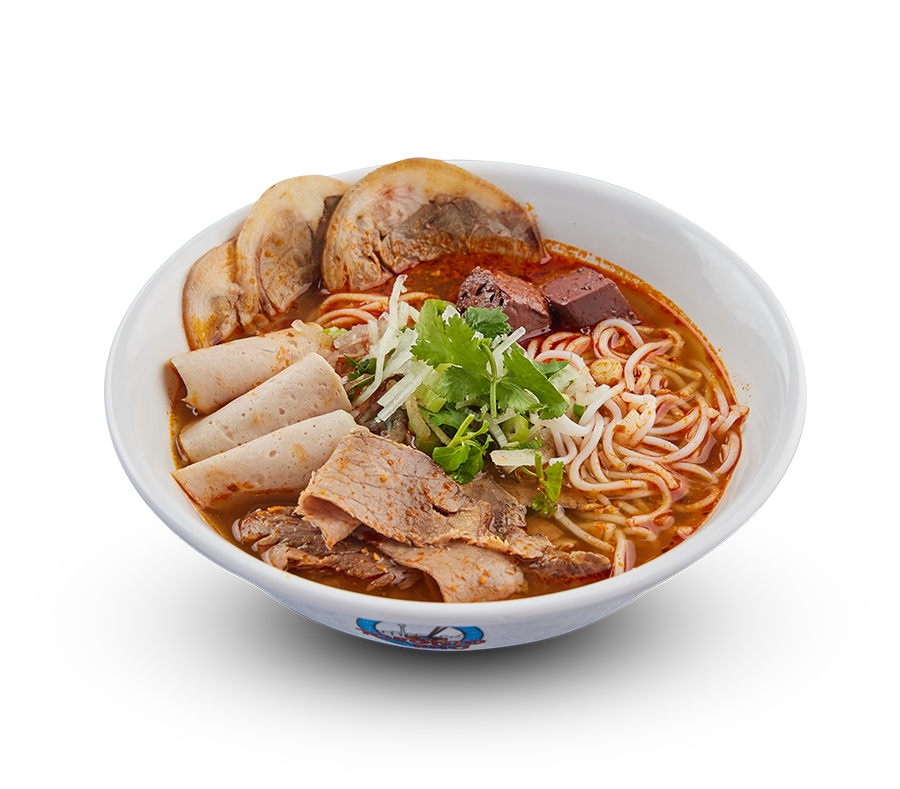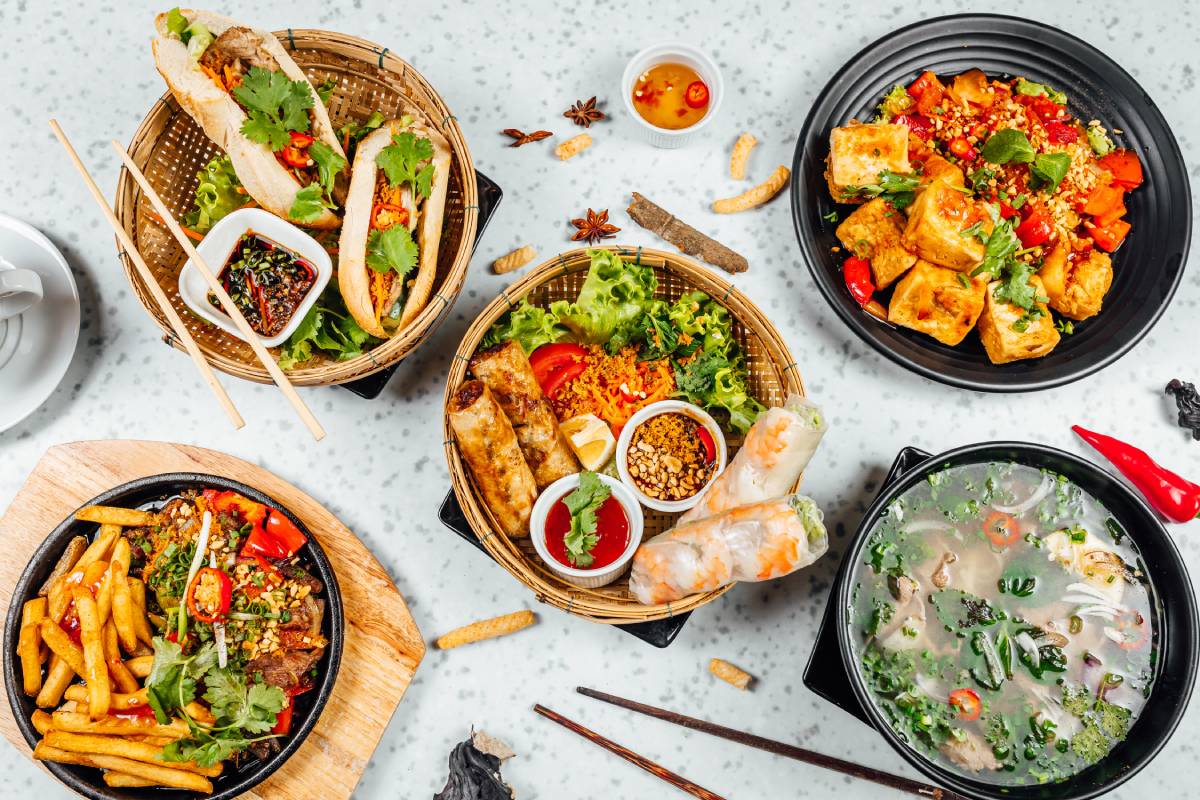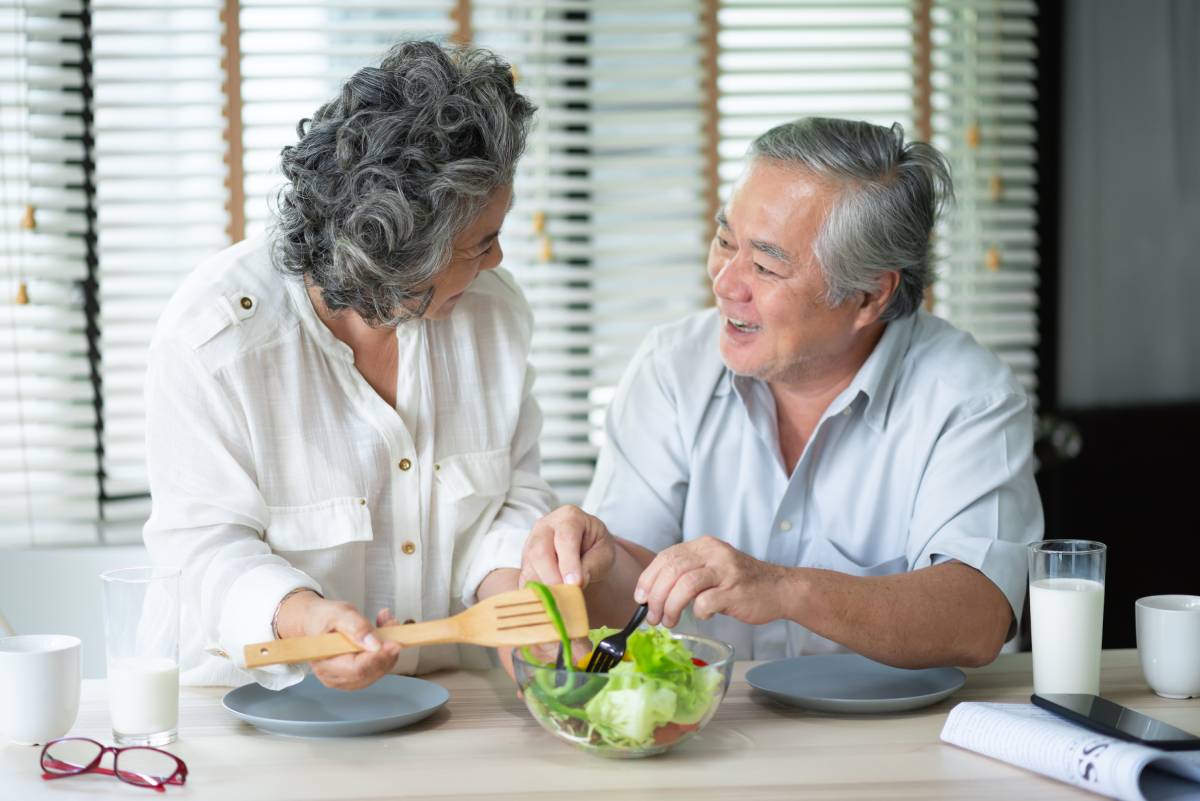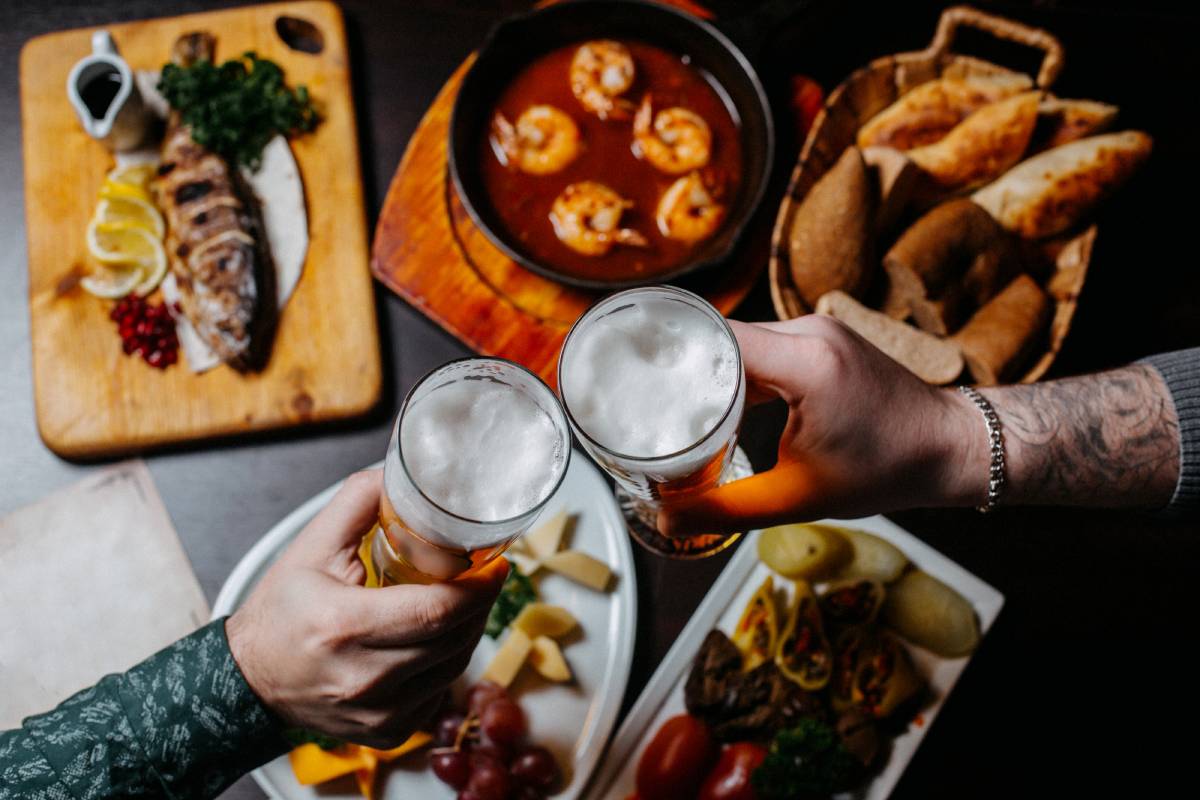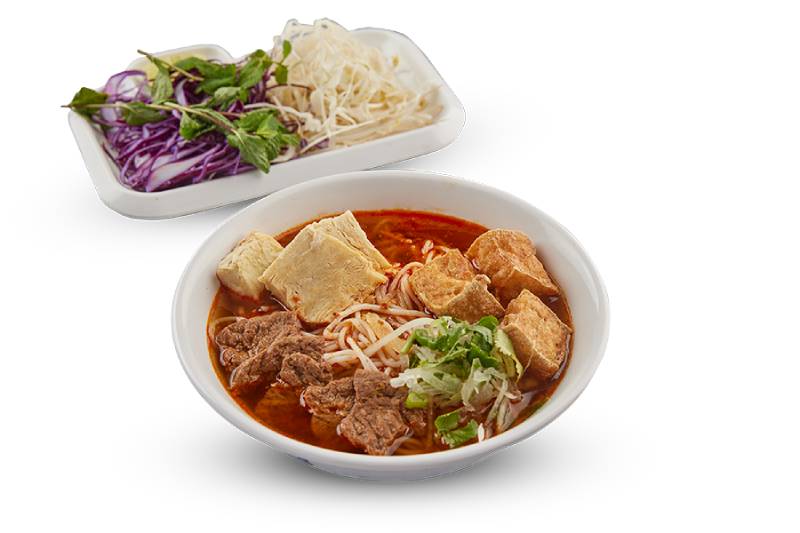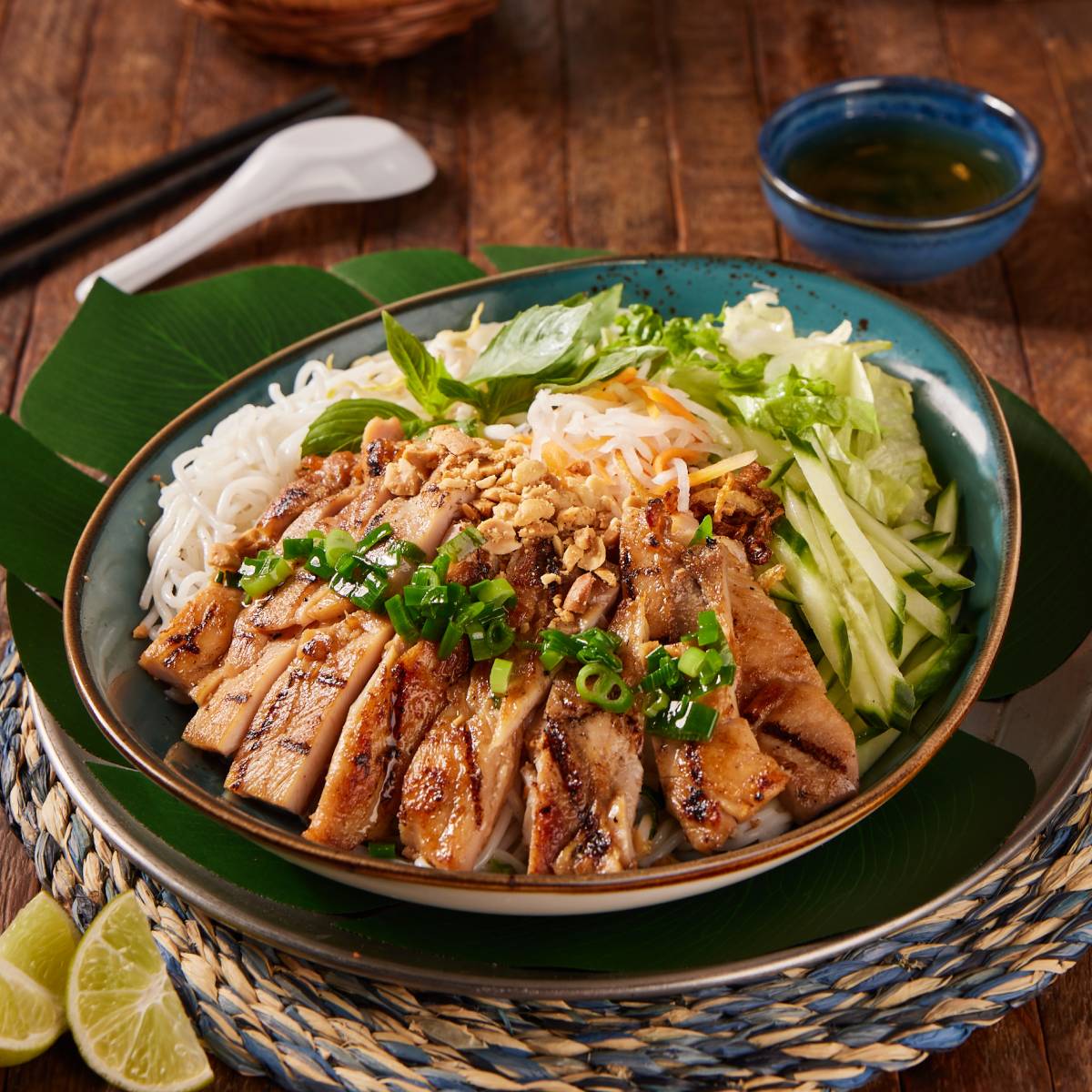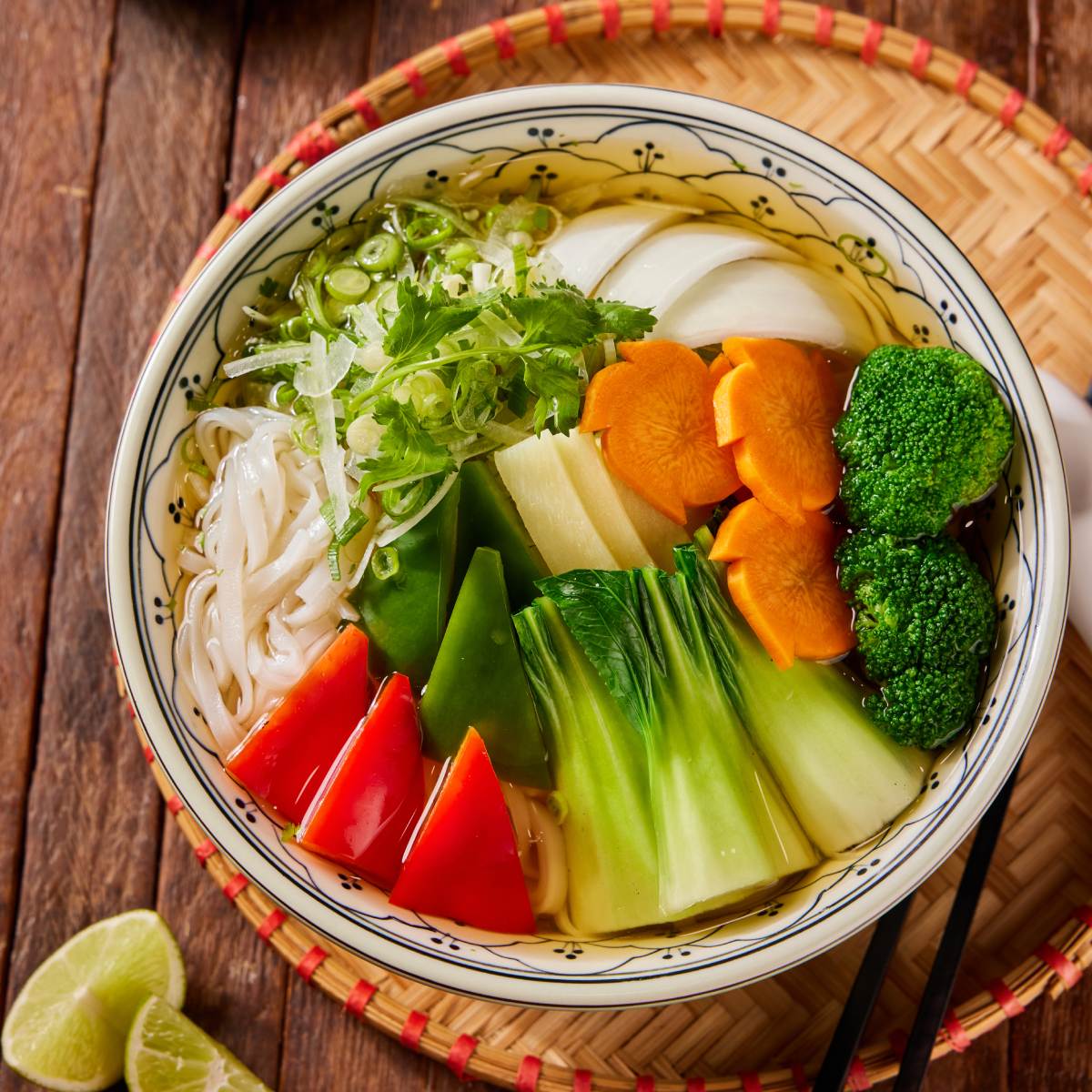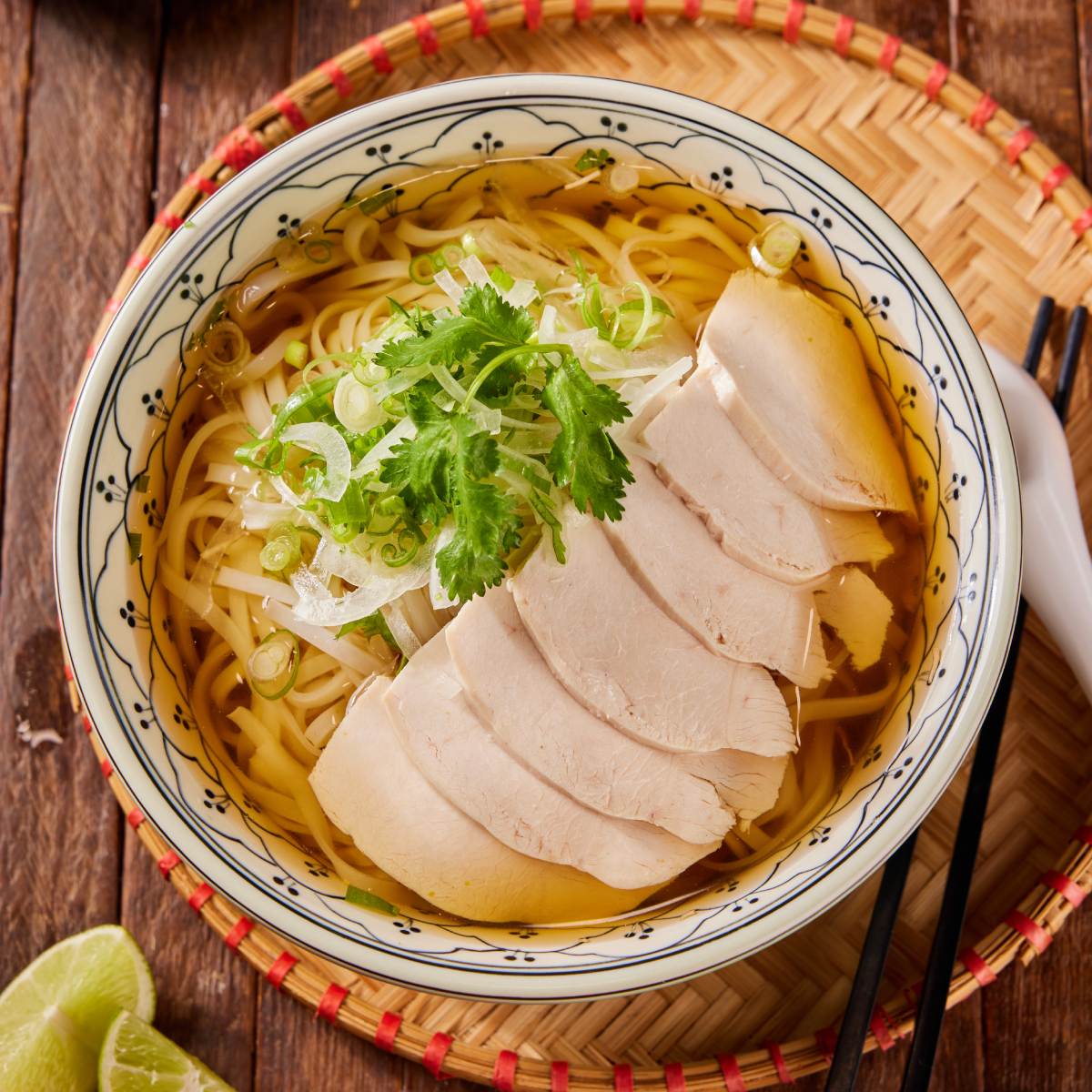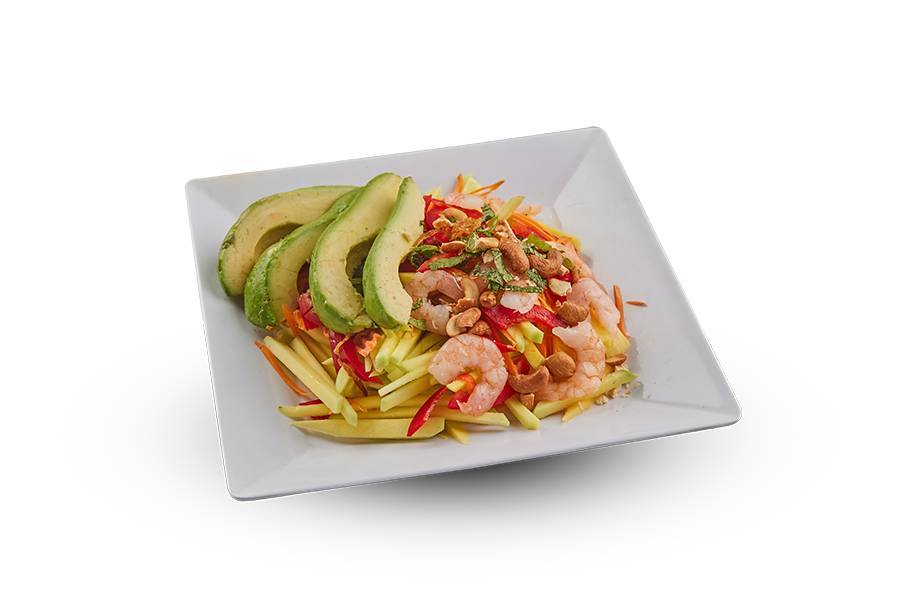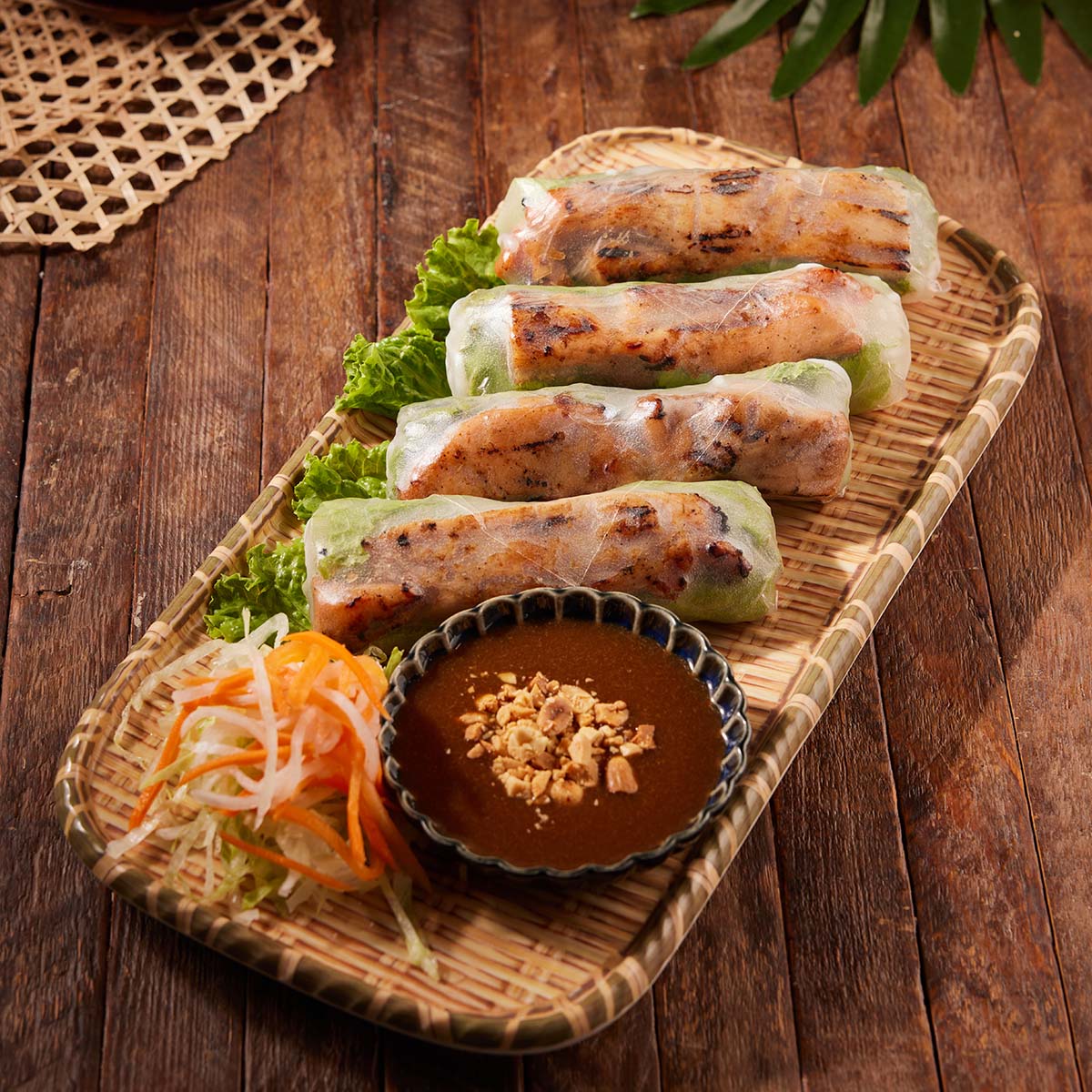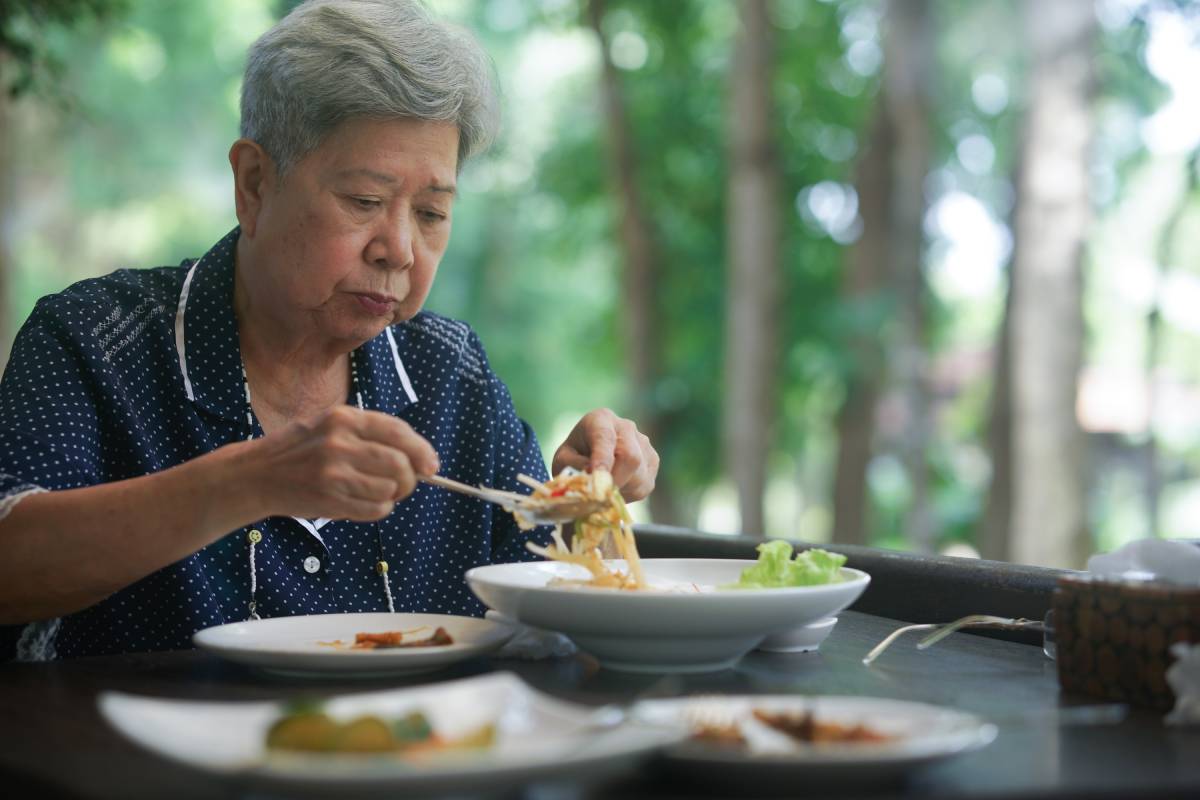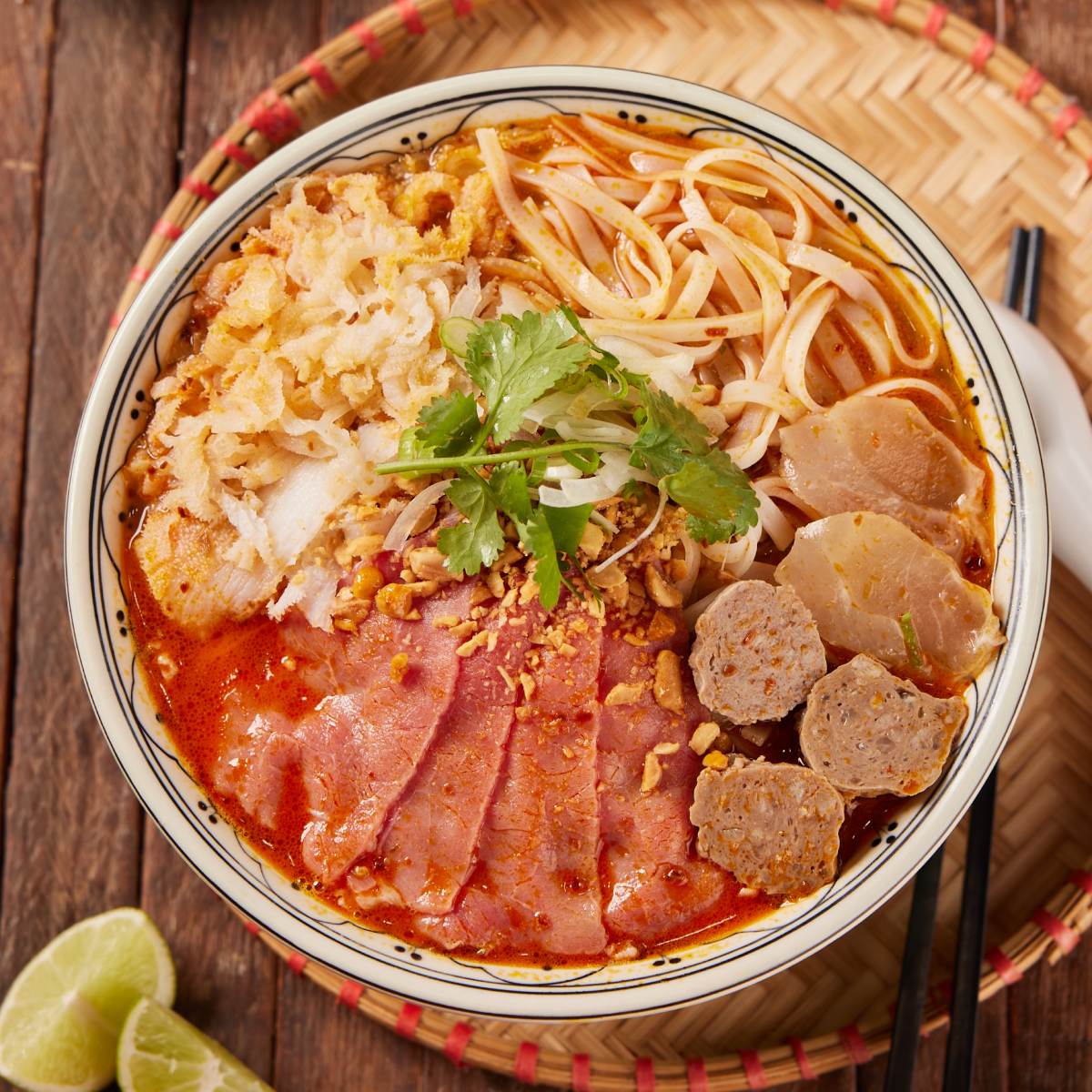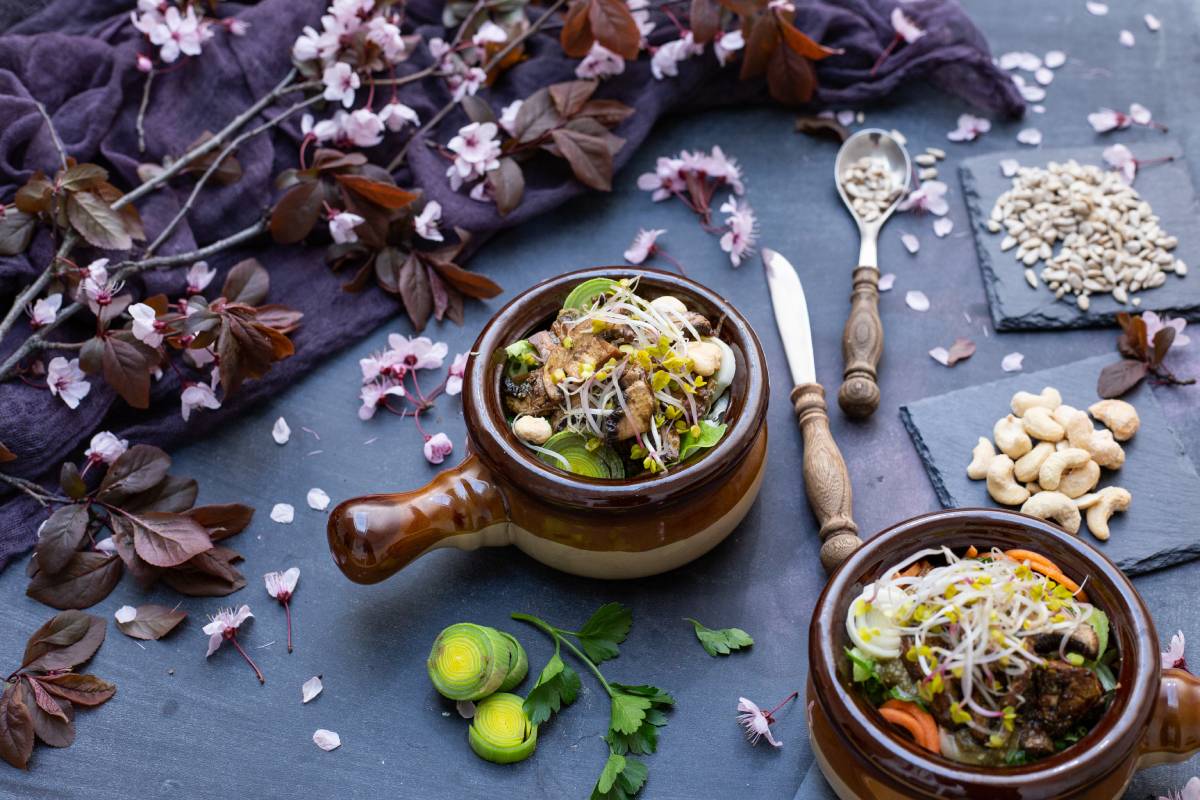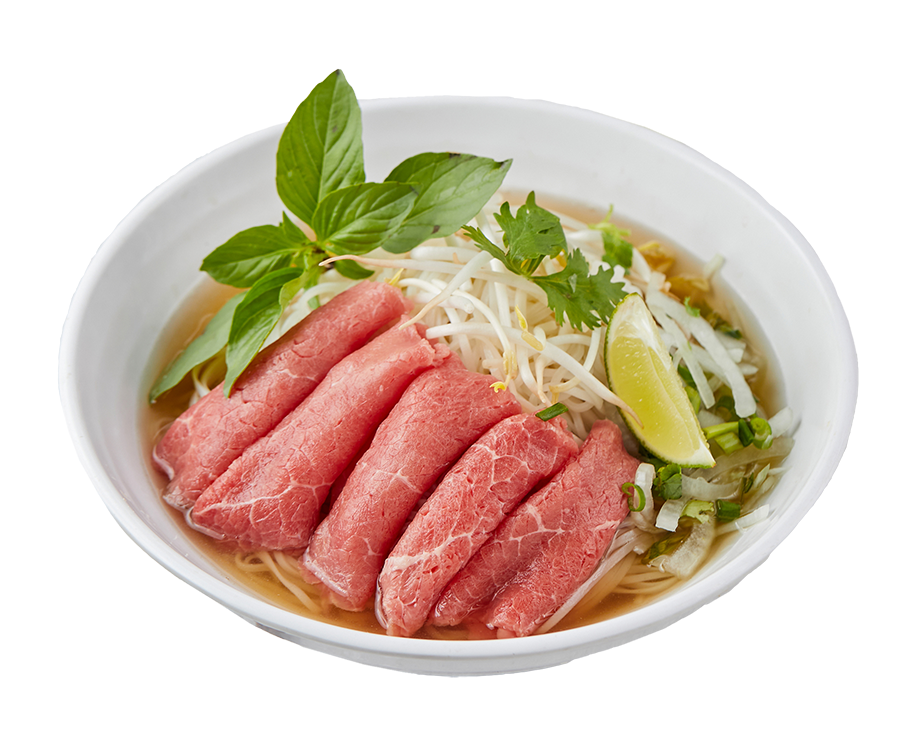Pho, pronounced "fuh," is much more than just a soup. It's a symphony of flavours, a balance of textures, and a testament to the art of cooking. We will explore the essence of this dish, from the traditional beef-based broth to the subtle spices, such as star anise and cinnamon, that infuse it with a unique aroma. We will also uncover the secrets behind achieving perfectly cooked noodles, and the art of selecting and garnishing the dish with bean sprouts, lime, herbs, and other condiments.
Whether you're a cooking novice or a seasoned chef, this beginner's guide to pho will equip you with the knowledge and skills to whip up this Vietnamese delicacy in your own kitchen. Get ready to savor the flavours of Vietnam and impress your friends and family with your newfound culinary expertise!
The history and origins of pho
Pho has a rich history dates back to the early 20th century in northern Vietnam. It is believed to have originated in Hanoi, where street vendors sold it and quickly gained popularity among the locals. Originally, pho was a simple dish made with rice noodles, beef broth, and thinly sliced beef. Over time, it evolved to include a variety of ingredients and flavours , reflecting the diverse culinary influences in Vietnam.
One theory suggests that pho was influenced by the French, who introduced beef to Vietnam during the colonial period. Another theory suggests that pho was inspired by Chinese noodle soups brought to Vietnam by Chinese immigrants. Regardless of its origins, pho has become an integral part of Vietnamese cuisine, with various regional variations and styles.
Pho has also gained international recognition, spreading to different parts of the world and becoming a staple in Vietnamese restaurants. Its popularity in Toronto can be attributed to its unique blend of flavours, comforting qualities, and the satisfaction it brings to the senses. Now, let's dive into the essential ingredients that make pho so special.
Essential ingredients in pho
Pho is known for its complex flavours , achieved through the harmonious combination of various ingredients. The key components of pho include the broth, the meat, the noodles, and the garnishes. Let's take a closer look at each of these elements to understand their importance in creating the perfect bowl of pho.
- Broth: The broth is the heart and soul of pho. It is typically made from beef bones, simmered for hours to extract all the rich flavours and nutrients. The bones are usually roasted beforehand to enhance the depth of flavour. The broth is infused with spices like star anise, cinnamon, cloves, and cardamom to achieve the signature taste of pho. This combination of ingredients gives pho its distinct aroma and savoury taste.
- Meat: Pho traditionally includes thinly sliced beef, such as eye round, brisket, or flank steak. The meat is added to the bowl just before serving, allowing it to cook in the hot broth. The heat of the broth cooks the meat to a tender and succulent texture while still retaining its natural flavours. Some variations of pho also include other meats, such as chicken or seafood, offering a range of options to suit different preferences.
- Noodles: Rice noodles are essential to pho, providing a delicate and chewy texture. The noodles are usually soaked in hot water before being added to the bowl, ensuring they are perfectly cooked. The size and shape of the noodles can vary, with thin or wide options available. The choice of noodles can significantly impact the overall experience of eating pho, as it contributes to the dish's mouthfeel and ability to hold the flavours of the broth.
Now that we've explored the foundational elements of pho let's continue our journey by uncovering the techniques and intricacies behind making the perfect bowl of pho.
Types of meat commonly used in pho
When it comes to pho, beef is the most common type of meat used. Its tender texture and rich flavor complement the broth and noodles perfectly. The choice of beef can vary depending on personal preference and regional variations. Here are some of the commonly used cuts of beef in pho:
- Eye round: Eye round is a lean cut of tender beef with minimal fat. It is often thinly sliced and added to the bowl just before serving. The delicate nature of the eye round allows it to cook quickly in the hot broth, resulting in tender and flavorful meat.
- Brisket: Brisket is a cut of beef that comes from the breast or lower chest of the animal. It has a higher fat content than eye round, which adds richness and depth to the broth. Brisket is usually simmered for a more extended period to ensure it becomes tender and succulent.
- Flank steak: Flank steak is a lean and flavorful beef cut often used in pho. It is thinly sliced and added to the bowl before serving, similar to eye round. The marbling in flank steak adds juiciness and enhances the dish's overall taste.
In addition to these cuts of beef, some variations of pho may include other meats, such as tendon, tripe, or meatballs. These additions offer different textures and flavours , allowing for a more diverse and satisfying culinary experience. Now that we've explored the types of meat commonly used in pho, let's move on to the next essential component - the noodles.
Noodle options for pho
Noodles are a crucial part of the pho experience, providing a soft and chewy texture that complements the flavours of the broth and meat. The choice of noodles can significantly impact the overall taste and experience of eating pho. Here are some common types of noodles used in pho:
- Rice noodles: Rice noodles, also known as pho noodles, are the most traditional and widely used type of noodle in pho. They are made from rice flour and water, resulting in a soft and translucent texture. Rice noodles come in different widths, ranging from thin to wide. The width of the noodles can affect the overall mouthfeel and ability to hold the flavours of the broth.
- Round noodles: Round noodles, also known as bun noodles, are another popular option for pho. They are made from wheat flour and have a slightly chewier texture compared to rice noodles. Round noodles are often used in southern Vietnam and offer a different eating experience compared to rice noodles.
Now that we've explored the different types of noodles used in pho, let's move on to the next crucial element - the broth.
Broth-making techniques for pho
The broth is the heart and soul of pho, infusing the dish with its rich flavours and aromas. Making the perfect pho broth requires patience, attention to detail, and the right combination of ingredients. Here are some techniques to achieve a flavorful and aromatic broth:
- Roasting the bones: Before simmering the bones, it's common to roast them in the oven to enhance the depth of flavor. Roasting the bones caramelizes the natural sugars and adds a smoky undertone to the broth.
- Simmering for hours: To extract all the flavours and nutrients from the bones, the broth is typically simmered for several hours. This slow cooking process allows the flavours to develop and ensures a rich and flavorful broth.
- Skimming off impurities: During the simmering process, impurities may rise to the surface of the broth. Skimming off these impurities helps achieve a clear and clean broth. This step is essential for a visually appealing and appetizing bowl of pho.
- Infusing with spices: The combination of spices used in pho is what gives the broth its unique aroma and taste. Common spices include star anise, cinnamon, cloves, and cardamom. These spices are usually added to the broth in a cheesecloth or spice bag, allowing for easy removal once the desired flavours are achieved.
Now that we've explored the techniques behind making the perfect pho broth, let's move on to the next component - the garnishes and toppings.
Garnishes and toppings for pho
Garnishes and toppings are essential in completing the pho experience, adding freshness, crunch, and additional flavours to the dish. Here are some common garnishes and toppings used in pho:
- Bean sprouts: Bean sprouts provide a refreshing and crunchy texture to the dish. They are typically blanched or added raw to the bowl, allowing them to retain their crispness.
- Lime: Lime wedges are often served alongside pho, allowing diners to squeeze the juice over their bowl. The acidity of the lime brightens the flavours of the broth and adds a tangy element to the dish.
- Herbs: Fresh herbs, such as Thai basil, cilantro, and mint, are commonly used as garnishes in pho. They add a burst of flavor and freshness to each spoonful. The herbs can be torn or chopped before adding them to the bowl, allowing their aromas to be released.
- Sliced chili peppers: For those who enjoy a bit of heat, sliced chili peppers can be added as a topping. The spiciness of the peppers adds an extra kick to the dish, enhancing the overall flavor profile.
These garnishes and toppings can be customized to suit individual preferences, allowing each person to create their own unique bowl of pho. Now that we've explored the garnishes and toppings, let's move on to the condiments and sauces commonly served with pho.
Common pho condiments and sauces
Condiments and sauces play a crucial role in enhancing the flavours of pho, allowing each person to customize their bowl according to their taste preferences. Here are some common condiments and sauces served with pho:
- Hoisin sauce: Hoisin sauce is a thick, sweet, and savory sauce made from soybeans, garlic, vinegar, and various spices. It adds depth and richness to the broth, enhancing the overall flavor profile of the dish.
- Sriracha: Sriracha is a popular hot sauce made from chili peppers, vinegar, garlic, sugar, and salt. It adds a spicy and tangy kick to pho, allowing diners to adjust the level of heat according to their liking.
- Fish sauce: Fish sauce is a staple in Vietnamese cuisine and is often used to add a salty and umami flavor to pho. It is made from fermented fish and is known for its pungent aroma. A small amount of fish sauce can elevate the flavours of the broth and noodles.
Now that we've explored the condiments and sauces commonly served with pho, let's move on to the final section of this beginner's guide - tips for making the perfect bowl of pho at home.
Tips for making the perfect bowl of pho at home
Making pho from scratch can be a labor of love, but with the right techniques and ingredients, you can recreate the flavours of your favorite pho restaurant in your own kitchen. Here are some tips to help you make the perfect bowl of pho at home:
- Use high-quality ingredients: The quality of your ingredients will significantly impact the final outcome of your pho. Opt for fresh herbs, high-quality meats, and aromatic spices to achieve the best flavours .
- Simmer the broth for a long time: To develop a rich and flavorful broth, simmer it on low heat for several hours. This slow cooking process allows the flavours to meld together and creates a complex broth that is both comforting and delicious.
- Skim off impurities: Skimming off any impurities that rise to the surface of the broth will result in a clear and clean broth. This step is essential for an appetizing presentation and optimal flavours .
- Adjust the seasoning: Taste your broth throughout the cooking process and adjust the seasoning as needed. Pho should have a delicate balance of flavours , so be mindful of the saltiness, sweetness, and spiciness of the broth.
- Precook the noodles: To ensure perfectly cooked noodles, precook them separately before adding them to the bowl. This helps prevent overcooking and ensures the noodles maintain their desired texture.
- Serve with a variety of garnishes and condiments: Offer a selection of garnishes, toppings, and condiments to allow everyone to customize their bowl of pho according to their taste preferences. This adds an interactive element to the dining experience and allows each person to create their own unique flavor profile.
With these tips in mind, you'll be well-equipped to make the perfect bowl of pho at home. So, gather your ingredients, fire up the stove, and get ready to savor the flavours of Vietnam in the comfort of your own kitchen.
Conclusion and next steps for exploring pho cuisine
Congratulations! You've completed PHO 101: A Beginner's Guide to Understanding the Ingredients and Techniques Behind the Dish. We hope this guide has provided valuable insights into the world of pho and inspired you to dive deeper into this flavorful cuisine.
Pho is a dish that continues to captivate and delight food enthusiasts worldwide. Its rich history, diverse flavours, and comforting qualities make it an exceptional culinary experience. Whether you're enjoying a bowl at your favourite Vietnamese restaurant or making it from scratch in your kitchen, pho is sure to satisfy your taste buds and warm your soul.
Now that you have a solid foundation in pho, we encourage you to explore the various regional variations, try different combinations of ingredients, and experiment with your unique twists. Pho is a dish that welcomes creativity and personalization, so don't be afraid to make it your own.
So, tie your apron, sharpen your chef's knife, and embark on a delicious journey into the world of pho. May your bowls be filled with aromatic broth, tender meat, and perfectly cooked noodles. Happy pho-making!
You have the option to visit the website torontopho.com and place an order for takeout, delivery, or even dine-in at our establishment. We offer a variety of mouthwatering and delicious options when it comes to PHO in TorontoPHO. To find us search for " PHO near me" you will find one of our locations in Toronto, North York, Woodbridge or Hamilton:
House Special Beef Noodle Soup (Phở Đặc Biệt)
Well Done Beef (Phở Nạm)
Grilled Beef on Rice (Cơm Bò)
Rare Beef (Phở Tái)
Combination Fried Rice (Cơm Chiên Dương Châu)
Shrimp and Chicken Pad Thai (Padthai Tôm Gà)
Pork and Shrimp Roll (Gỏi Cuốn Tôm Thịt)
Deep Fried Spring Roll (Chả Giò)

